- Sustainable Participatory Management of Irrigation and Drainage Network at Khuzestan
- Social Capacity Building for Wetlands Conservation and Sustainable Management at Khorasan Razavi Province
- Comprehensive Study of “Strategies and Models for Rural Women’s Participation in Sustainable Groundwater Management Based on International Experiences”
- The Project of Increasing the Awareness and Participation of Local Societies in Sustainable Management of Soil and Water Resources of Hablehroud
- Capacity Building for Conservation of the Asiatic Cheetah through Local Community and Stakeholder Involvement; case study: Miandasht
- Cooperation Agreement for Capacity Building in Conservation of Biodiversity
…………………..
Sustainable Participatory Management of Irrigation and Drainage Network at Khuzestan
Although the necessary of establishing participatory management in irrigation and drainage network has been raised; there is no successful pattern in neither local nor national scale at Iran. It could be due to the complexity and interdisciplinary nature of the issues that should be considered simultaneously, particularly at four aspects of Social, Technical, Economic and Legal matters.
Base on the Abangah social & engineering group experiences on capacity building in the field of water and environment, the Khuzestan Water and Power Authority, selected Abangah as the consultant for planning, guiding and shaping sustainable participatory management in an area as a pattern near Khoramshahr city.
Social Capacity Building for Wetlands Conservation and Sustainable Management at Khorasan Razavi Province
Regard to necessity and special role of wetlands at ecosystem also sustainable water management, by cooperation of Khorasan Razavi Department of Environment, Abangah social & engineering group launched Social Capacity building for Wetland Conservation and Sustainable Management plan. The plan was focused more on local communities to train and empower them on sustainable exploitation of wetlands.
Khorasan Razavi is pioneer at environmental social investment and many projects have been implemented there like “Mohit yar” in this regard.
Comprehensive Study of “Strategies and Models for Rural Women’s Participation in Sustainable Groundwater Management Based on International Experiences”
Women constitute half of society, and addition to their impact on routine and today’s affairs, has a long-term and sustainable impact through training the next generation of a society. On developing countries, due to various reasons, the women’s participation in different areas such as environment and water resources management has not been prepared adequately, while according to the researches, women can play an important role in these areas.
However in Iran, on the recent years, necessity of considering non-structural approach and communities’ participation in water resource management has increased. Consequently concerns about the absence of efficient model for participation of local communities especially the women have developed. Accordingly, the Khorasan Razavi Regional Water Company has defined a research to study the successful international experiences and adapting them to local conditions in the country and region. This Study has been started by the Environmental Research Center of Khavaran in cooperation with the Abangah group team.
The results can be used in the “Groundwater Rebalancing National Plan”, and may lead to fundamental change in the field of participation water resources management.
The Project of Increasing the Awareness and Participation of Local Societies in Sustainable Management of Soil and Water Resources of Hablehroud
Sustainable Land and Water Resources Management in Hablehroud project, in its second phase, aims to achieve an appropriate Watershed Comprehensive Management Model for arid and semi-arid areas of the country through strengthening intersectional coordination among different stakeholders and implement participation-oriented local processes.
“The ultimate goal of this project is based on developing comprehensive management of renewable natural resources.”
It shall not be possible to realize such achievements without enhanced participation of all stakeholders and users of natural resources and the best strategy in this regard is intellectual investment on students and future generation of the watershed to promote enhanced participation of the local community. They can secure the economic, social and environmental condition of watershed in the future through raised sensitivity on sustainable use of natural resources. Therefore, the operational framework of this approach has been provided for training students of Hablehroud watershed in Garmsar township of Semnan province during 2013-2014 academic years by National Forests, Range and Watershed Organization and United Nation Development Program. A clear path including phases and steps are provided for the implementation process of the project to raise awareness in the stakeholders awareness and “Abangah” is selected as the experienced consultant in this process.
For more information about this plan, please visit (www.stu-hablehroud.ir) and also download book of Painting and crafts elementary student file.
Capacity Building for Conservation of the Asiatic Cheetah through Local Community and Stakeholder Involvement; case study: Miandasht Region
Involvement and participation of local communities in nature and natural resource conservation is one of the key factors that determine the success of a conservation project. In the case of, the conservation of Asiatic Cheetah, the role of the small local community are present in their habitat seems even more vital and critical to the success of the project. Asiatic cheetahs, once as wide spread as India and Afghanistan to Turkmenistan and Iran and even Saudi Arabia and Syria are now critically endangered and only exist in small parts of Iran. The study site, Miandasht, is considered one of the important regions, which they are present.
The Office of the National Cheetah Project with the help of the Abangah Group implemented the “Actor Analysis” methodology to identify and assess the stakeholder’s role in this area.
According to the framework of the study, six study steps were established for this project:
- Clarification of the aims and objectives of the study and the current state of actors and stakeholders
- Studying on the socio-economic conditions of local communities around Miandasht Wildlife Reserve
- Identification of high impact groups around Miandasht Wildlife Reserve
- Identification and documentation of key stakeholders among high impact groups
- Evaluation and collection of stakeholder interests and how they will be impacted by conservation projects
- Raising awareness and creation of networks for activists (consuls, teachers, clergies and health specialists) to take more responsibility regarding the cheetah conservation project
Cooperation Agreement for Capacity Building in Conservation of Biodiversity
Capacity building to improve local societies participation in conservation of the species which are going to be extinct, is the topic of an agreement which were signed by Environment Department of Khorasan Razavi province, Abangah and a financial institution in 2014. Training activities and holding workshops, was done accordingly.
Selected Images in the Field of “Promoting Participatory Management”
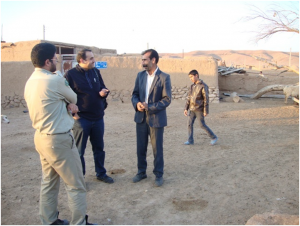

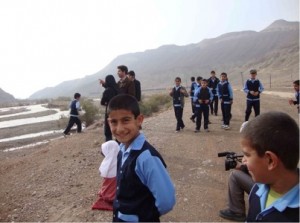

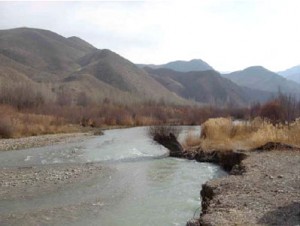
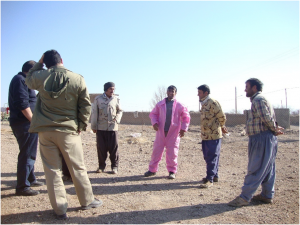
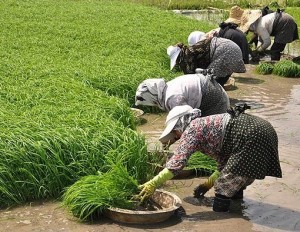

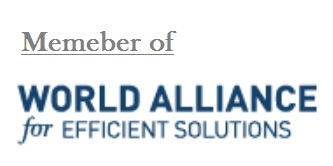
 sending...
sending...